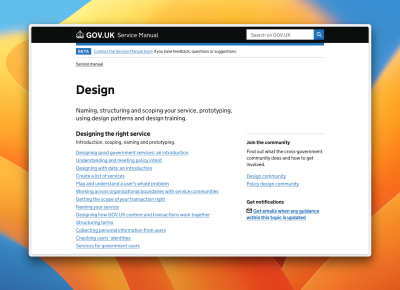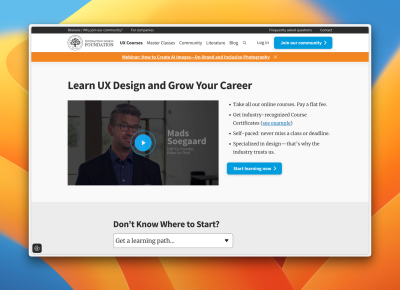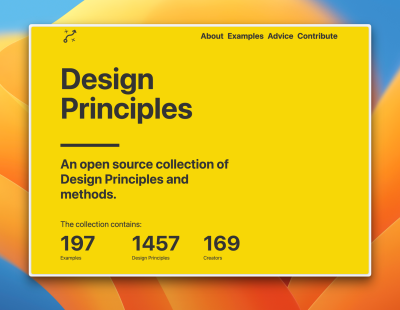Rethinking The Role Of Your UX Teams And Move Beyond Firefighting — Smashing Magazine
In my experience of building and supporting UX teams, most of them are significantly under-resourced. In fact, the term “team” can often be a stretch, with many user experience professionals finding themselves alone in their roles.
Typically, there are way more projects that impact the user experience than the team can realistically work on. Consequently, most UX teams are in a constant state of firefighting and achieve relatively little in improving the overall experience.
We can complain about being under-resourced as much as we want, but the truth is that our teams are unlikely to grow to a size where we have sufficient staff to address every detail of the experience. Therefore, in this post, I want to step back and reconsider the role of user experience professionals and how UX teams can best improve the user experience of an organization.
What Is The Role Of A UX Professional?
There is a danger that as UX professionals, we focus too much on the tools of our trade rather than the desired outcome.
In other words, we tend to think that our role involves activities such as:
- Prototyping
- User research
- Interface design
- Testing with users
But these are merely the means to an end, not the end goal itself. These activities are also time-consuming and resource-intensive, potentially monopolizing the attention of a small UX team.
Our true role is to improve the user experience as they interact with our organization’s digital channels.
This reframing of our role opens up new possibilities for how we can best serve our organizations and their customers. Instead of solely focusing on the tactical activities of UX, we must proactively identify the most impactful opportunities to enhance the overall customer experience.
Changing How We Approach Our Role
If our goal is to elevate the customer experience, rather than solely executing UX activities, we need to change how we approach our role, especially in under-resourced teams.
To maximize our impact, we must shift from a tactical, project-based mindset to a more strategic, leadership-oriented one.
As I help shape UX teams in organizations, I achieve this by focusing on four critical areas:
Let’s explore these in turn.
The Creation Of Resources
It is important for any UX team to demonstrate its value to the organization. One way to achieve this is by creating a set of tangible resources that can be utilized by others throughout the organization.
Therefore, when creating a new UX team, I initially focus on establishing a core set of resources that provide value and leave an impressive impression.
Some of the resources I typically focus on producing include:
- User Experience Playbook
An online learning resource featuring articles, guides, and cheatsheets that cover topics ranging from conducting surveys to performing AB testing. - Design System
A set of user interface components that can be used by teams to quickly prototype ideas and fast-track their development projects. - Recommended Supplier List
A list of UX specialists that have been vetted by the team, so departments can be confident in hiring them if they want help improving the user experience. - User Research Assets
A collection of personas, journey maps, and data on user behavior for each of the most common audiences that the organization interacts with.

These resources need to be viewed as living services that your UX team supports and refines over time. Note as well that these resources include educational elements. The importance of education and training cannot be overstated.
The Provision Of Training
By providing training and educational resources, your UX team can empower and upskill the broader organization, enabling them to better prioritize and champion user experience improvements. This approach effectively extends the team’s reach beyond its limited internal headcount, seeking to turn everybody into user experience practitioners.
This training provision should include a blend of ‘live’ learning and self-learning materials, with a greater focus on the latter since it can be created once and updated periodically.
Most of the self-learning content will be integrated into the playbook and will either be custom-created by your UX team (when specific to your organization) or purchased (when more generic).

In addition to this self-learning content, the team can also offer longer workshops, lunchtime inspirational presentations, and possibly even in-house conferences.
Of course, the devil can be in the details when it comes to the user experience, so colleagues across the organization will also need individual support.
The Offering Of Consultative Services
Although your UX team may not have the capacity to work directly on every customer experience initiative, you can provide consultative services to guide and support other teams. This strategic approach enables your UX team to have a more significant impact by empowering and upskilling the broader organization, rather than solely concentrating on executing design artifacts.
Services I tend to offer include:
- UX reviews
A chance for those running digital services to ask a UX professional to review their existing services and identify areas for improvement. - UX discovery
A chance for those considering developing a digital service to get it assessed based on whether there is a user need. - Workshop facilitation
Your UX team could offer a range of UX workshops to help colleagues understand user needs better or formulate project ideas through design thinking. - Consultancy clinics
Regular timeslots where those with questions about UX can “drop in” and talk with a UX expert.
But it is important that your UX team limits their involvement and resists the urge to get deeply involved in the execution of every project. Their role is to be an advisor, not an implementer.
Through the provision of these consultative services, your UX team will start identifying individuals across the organization who value user experience and recognize its importance to some degree. The ultimate goal is to transform these individuals into advocates for UX, a process that can be facilitated by establishing a UX community within your organization.
Building a UX community within the organization can amplify the impact of your UX team’s efforts and create a cohesive culture focused on customer experience. This community can serve as a network of champions and advocates for user experience, helping spread awareness and best practices throughout the organization.
Begin by creating a mailing list or a Teams/Slack channel. Using these platforms, your UX team can exchange best practices, tips, and success stories. Additionally, you can interact with the community by posing questions, creating challenges, and organizing group activities.

For example, your UX team could facilitate the creation of design principles by the community, which could then be promoted organization-wide. The team could also nurture a sense of friendly competition by encouraging community members to rate their digital services against the System Usability Scale or another metric.
The goal is to keep UX advocates engaged and advocating for UX within their teams, with a continual focus on growing the group and bringing more people into the fold.
Finally, this community can be rewarded for their contributions. For example, they could have priority access to services or early access to educational programs. Anything to make them feel like they are a part of something special.
An Approach Not Without Its Challenges
I understand that many of my suggestions may seem unattainable. Undoubtedly, you are deeply immersed in day-to-day project tasks and troubleshooting. I acknowledge that it is much easier to establish this model when starting from a blank canvas. However, it is possible to transition an existing UX team from tactical project work to UX leadership.
The key to success lies in establishing a new, clear mandate for the group, rather than having it defined by past expectations. This new mandate needs to be supported by senior management, which means securing their buy-in and understanding of the broader value that user experience can provide to the organization.
I tend to approach this by suggesting that your UX team be redefined as a center of excellence (CoE). A CoE refers to a team or department that develops specialized expertise in a particular area and then disseminates that knowledge throughout the organization.
This term is familiar to management and helps shift management and colleague thinking away from viewing the team as UX implementors to a leadership role. Alongside this new definition, I also seek to establish new objectives and key performance indicators with management.
These new objectives should focus on education and empowerment, not implementation. When it comes to key performance indicators, they should revolve around the organization’s understanding of UX, overall user satisfaction, and productivity metrics, rather than the success or failure of individual projects.
It is not an easy shift to make, but if you do it successfully, your UX team can evolve into a powerful force for driving customer-centric innovation throughout the organization.
(vf, il)